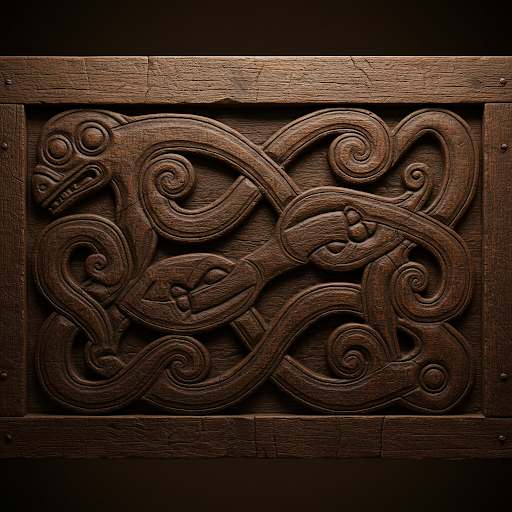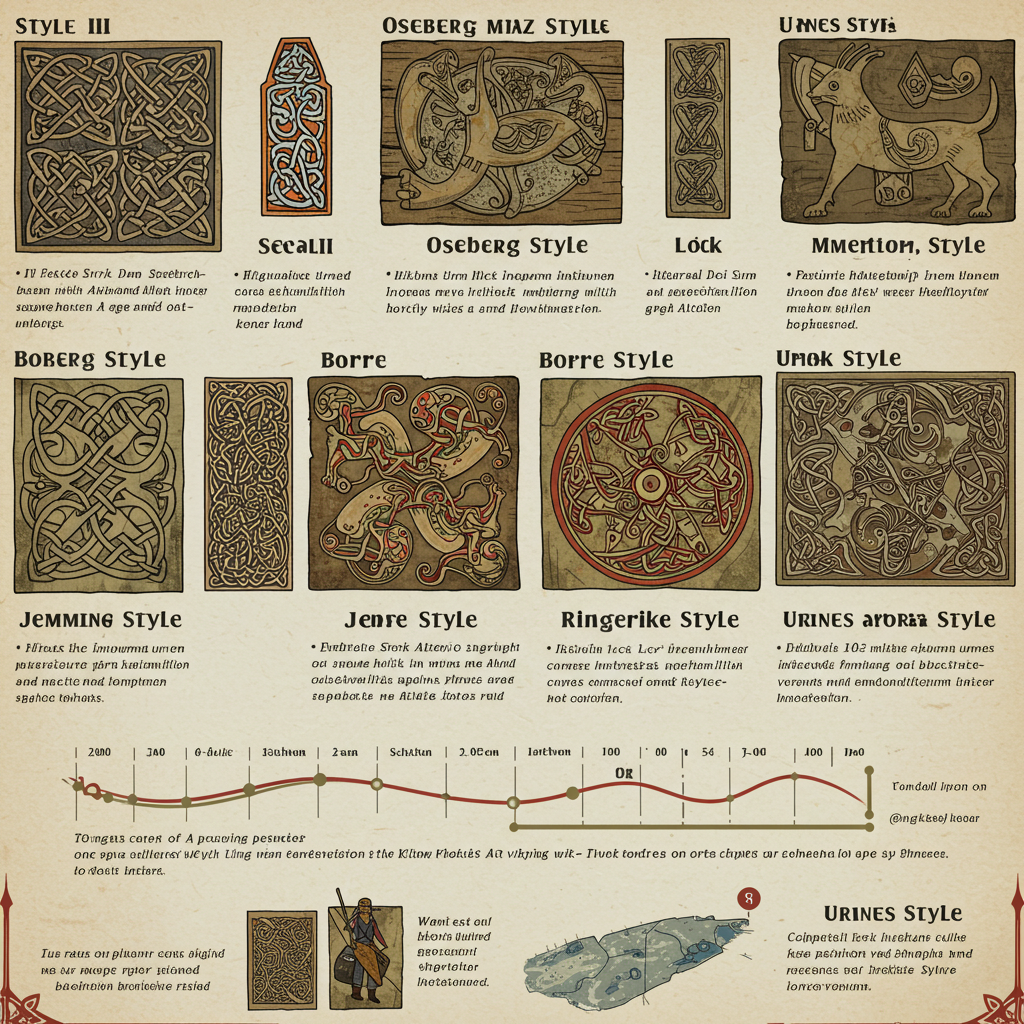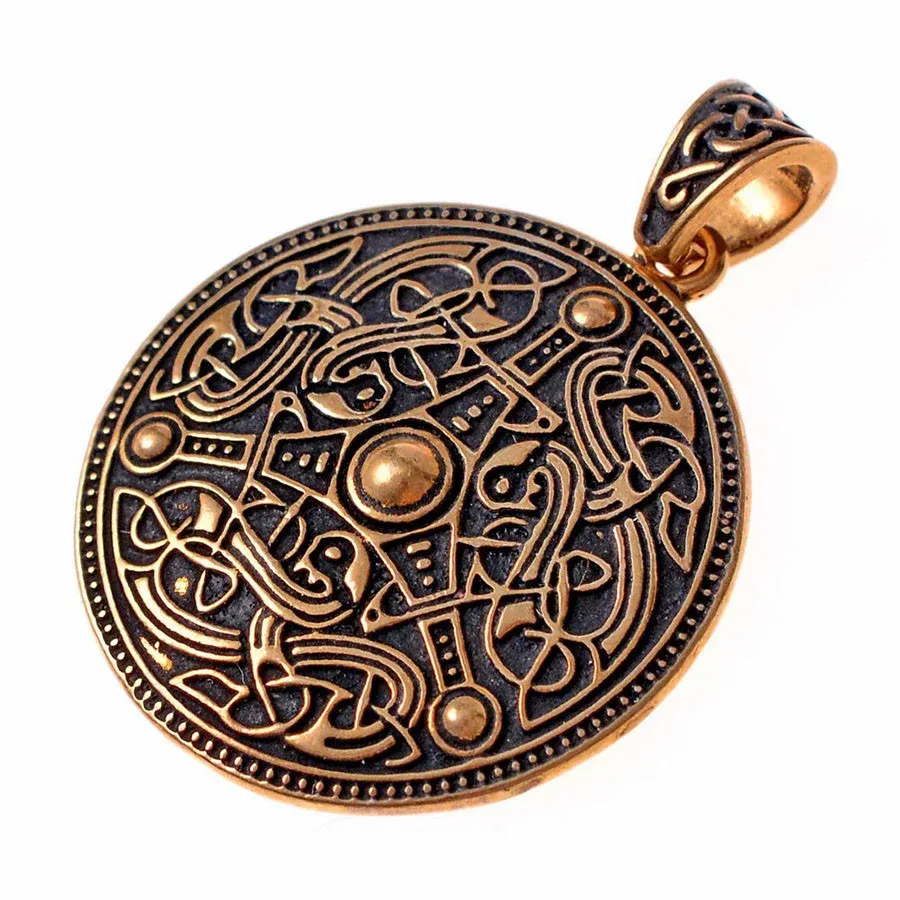What is the Oseberg Viking style?
The Oseberg Viking style is a fascinating chapter in the decorative art of the ancient Viking civilization and marks the beginning of an artistic development that shaped its characteristic aesthetic. Much more than just a simple set of decorative techniques, this style reflects the cultural and historical environment from which the Vikings emerged.
Origin of the Oseberg Style
The designation Oseberg style, also known as Oseberg-Broa style, is due to two crucial archaeological finds: the famous Oseberg burial ship in Norway and the Broa grave in Sweden. Both sites, dated from the late 8th century to the early 9th century, have made a valuable contribution to our understanding of Viking art by preserving extraordinary objects made of wood, metal, and textiles, many of which remain in remarkably good condition.

Characteristics of the Oseberg Style
One of the most representative characteristics of the Oseberg style is the presence of beast figures with indeterminate anatomy. These creatures, with sinuous bodies, are adorned with spiral-like projections and prehensile limbs. The latter element is particularly important as it symbolizes the "gripping beast motif," a distinctive element that persisted in Viking art for approximately 150 years. These decorations were not limited to luxury items: they also adorned everyday objects such as bed frames, horse bridles, and wood from the burial ship.

Historical Context
The Oseberg style developed around the years 780 to 850 AD and marks the beginning of Viking art, allowing the transition from the artistic tradition of the Vendel period to purely Viking styles. This style was essential in laying the foundations for later styles such as Borre, Jelling, Mammen, Ringerike, and Urnes, each evolving with its own influences but inheriting the animalistic and geometric elements of Oseberg.
Impact and Legacy
The discovery of the Oseberg grave is one of the most significant archaeological contributions from the Viking world, offering not only a beautiful collection of carved wooden objects but also remarkable textiles. These discoveries provide us with a comprehensive perspective on Viking art across various materials, demonstrating the intricate creative work of the craftsmen of the time.
The Oseberg style not only lays the groundwork for Viking decorative art but also offers a window into the Viking mindset and culture, where animal and symbolic figures carried mythical meanings, likely for protection and religious symbolism.
Visual Summary and Key Features
- The style developed between the 8th century and part of the 9th.
- Its main motifs include fantastic beasts with curved bodies, prehensile limbs, and spirals.
- It was applied to a variety of objects, from textiles to wood and metals.
- It is the first phase of Viking art, influencing subsequent styles.
- The "gripping beast motif" is its most distinctive feature.
- Named after discoveries in Oseberg, Norway, and Broa, Sweden.

The Oseberg Viking style is fundamental for understanding the evolution of art in Northern Europe during the Middle Ages. It represents the beginning of an artistic legacy that continues to fascinate with its visual originality and symbolic richness.




























